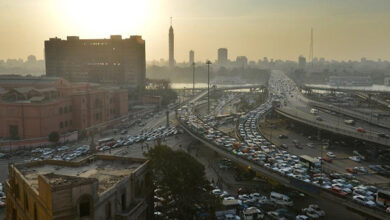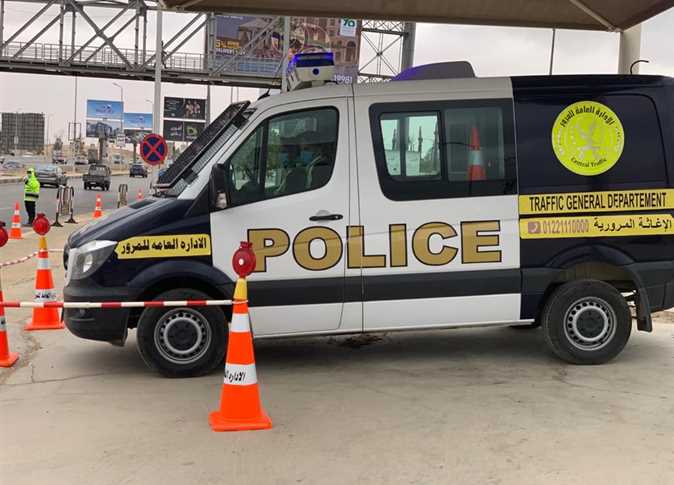
Walking through the narrow alleys of Khan al-Khalili bazaar in Cairo, it is hard to miss the white sculptures and statues displayed openly in shop windows. But while these are likely camel bone, some shops still secretly carry ivory, even though it’s been banned for decades.
Despite the 23-year ban on the international trade in ivory, Egypt remains Africa’s biggest ivory trafficking hub, according to the latest report by TRAFFIC, an organization that monitors wildlife trade. The report says the political unrest of the Arab Spring has helped fuel the prohibited industry.
Titled “Illegal ivory sales in Egypt” and published in the TRAFFIC Bulletin last year, the report says that, despite the declining volume of elephant ivory found on the Egyptian market over the past decade, the country remains a major hub in the global ivory trade, with craftsmen and vendors operating with little risk of seizure.
Since 1990, many countries have severely restricted or banned the import and sale of ivory due to the plummeting populations of animals that produce them — mostly elephants, but also walruses, sperm whales, narwhals and hippopotamuses.
Most elephant tusks come to Egypt from Sudan, the report says, but Cote d’Ivoire, Kenya and Tanzania are also mentioned as sources of ivory by vendors in Cairo. The Sudanese border is where most of the smuggled ivory enters Egypt, on camels, donkeys and pickup trucks.
The writers of the report, Esmond Martin and Lucy Vigne, attribute the continuous supply of the trade to the lack of law enforcement.
As easy as it to find the illegal products in Khan al-Khalili, it was challenging to find someone who would talk openly about ivory, or “white gold,” out of fear it would result in a renewed crackdown by authorities.
Mohamed, whose name has been changed, is known as one of the oldest ivory sellers in the area. He tells Egypt Independent that real ivory is becoming a very rare material, following the international curbing of the trade and national crackdowns by environmental authorities.
Mohamed is one of the traders who were affected by the crackdowns that took place in early 2000. He criticizes this move, saying that traders are not the right target to stop the illegal business because they simply constitute the most visible part of it.
While walking to the ancient Turkish bazaar, Mohamed points at his other shop, which has larger collections of ivory goods. He says this shop is reserved for high-profile customers and that most of the displayed ivory items came from old stocks of ivory bought 20 years ago.
“Authorities raided this area few years ago and confiscated products from a dozen famous sellers here,” Mohamed says. “They seized ivory products worth a quarter of a million [Egyptian] pounds from me. Now we work on a very small scale.”
As old as Egypt itself, ivory was always an important aspect of Egyptian culture. It was considered the best material for carving stones for statues, and decorated the jewelry of ancient queens. It symbolized power for kings and topped their wooden staffs.
Earlier TRAFFIC studies published in 1998 and 2005 say the main buyers of ivory in Egypt were Europeans, particularly Italian and Spanish tourists. Western visitors continue to buy, but the latest study reveals that the new customers, with growing spending power and a strong taste for carved elephant tusks, are Chinese.
The report showed a rise in trade, aided by new airline routes passing through Dubai and on to Africa and the wider region, inadvertently carrying ivory.
“A lot of ivory going to China passes through Dubai all the time, it is a trade route,” says Tom Milliken, an ivory trade expert at the agency. “All these airlines that have [been] pioneering routes between Africa and Asia are unintentionally a part of the trade route and carry ivory, no question.”
According to the research, some Chinese expatriates and tourists spend up to US$50,000 on ivory during a single bargaining session.
Mohamed confirms this number and says Chinese customers have, by far, become the top buyers. He says many of them are elites who order special gifts to take abroad, and that he has heard stories about them hiding ivory products in jewels to pass airport security checks.
Ragy Toma, general director of the Egyptian Wildlife Service, is also quoted in the TRAFFIC report. He told Egypt Independent that authorities are regaining their strength, and that all ivory selling points are monitored closely.
“Many stakeholders are involved in the process,” Toma says. “We, as the Egyptian Wildlife Service, along with the Environment Ministry, the Interior Ministry and the airport authorities, have the role of confiscating all illegal ivory items, and we make it very hard for ivory to enter the country.”
Toma adds that most of the products that are on display in shops are made of camel bone, not ivory. The few shops that have ivory hide it well, and these are probably old ivory items, because the crackdowns have become more severe on the Sudanese border.
But the border is still considered porous, as there are not enough Egyptian officers posted there to monitor its entire length.
Between 2005 and 2010, there was a 43 percent drop in the sale of ivory because police conducted several raids and seizures, Toma says. Last year, sales went back up 10 percent because of the political situation and the impossibility of working properly.
He says there are about 300 tons of ivory sitting in the storage rooms of the Agriculture Museum in Giza, because the Convention on International Trade in Endangered Species of Wild Fauna and Flora treaty prevents seized ivory from being transferred to any other facility.
Leading animal welfare activist Dina Zulfikar says she believes Egypt is not doing enough to curb illegal ivory traffic. She harshly criticizes the performance of all concerned agencies, including the treaty’s offices in Egypt.
“It is easy to find these shops. If you take a walk in Khan al-Khalili, you will find all types of ivory, with not a single legal paper certifying their origins. So I see no excuse for Egyptian authorities not to end this trade,” she says, adding that most people don’t know that ivory trade is internationally prohibited.
Zulfikar stresses that while Egypt ranks among the main countries in every report on illegal trades, the government is basically turning a blind eye to all of the international warnings.
Egypt was among the first countries to join the endangered species convention, which is the largest international conservation treaty and has 175 members worldwide. A ministerial decree in the 1990s banned ivory trade, making it illegal to import, export or possess ivory products or offer them for sale.
While Zulfikar criticizes the performance of Egyptian authorities, Toma says major efforts have been made despite very limited financial resources.
“We are preparing a new campaign to raise awareness about ivory,” Toma says. “We are waiting for the funding from the Agriculture Ministry and maybe also [from] the International Fund for Animal Welfare. Brochures and posters need to be available at the airport and in Khan al-Khalili, and written in English, Arabic and Chinese.”
However, Toma blames the treaty for putting too much pressure on his office, saying it should address the traffic problem at its source, which is in central Africa.
“We are only the last stop, and they should confiscate upstream instead of pointing the finger at us,” he says.
This piece was originally published in Egypt Independent's weekly print edition.





